| Belongs to |
Baltic Middle Devonian
|
| Type | chronostratigraphy |
| Rank | Stage |
| Scope | regional |
| Status | formal standard |
| Author | Liepinš |
| Year | 1951 |
| Age top (Ma) | 373.5 |
| Age base (Ma) | 377 |
| Age (Ma) |
Givetian
|
| Alt. index | D2GJ |
| Date changed | 2015-12-22 |
| Locality | Type | From (m)1 | To (m)2 | Reference | Remarks |
|---|---|---|---|---|---|
| Gauya River, Latvia |
stratotype (unspecified)
| Kleesment & Mark-Kurik, 1997a |
| Reference | Content | Year1 | Pages | Remarks |
|---|---|---|---|---|
| Kleesment & Mark-Kurik, 1997a |
1997
| 119-120 | ||
| Mark-Kurik & Põldvere, 2012a |
2012
|
Gauja Stage
by A. Kleesment & E. Mark-Kurik
Original text from: Raukas, A., Teedumäe, A. (eds). 1997. Geology and Mineral Resources of Estonia. Estonian Academy Publishers, Tallinn. 436 pp. ISBN 9985-50-185-3. Available online at: sarv.gi.ee/geology.
The Gauja Stage was formally established by Liepinš (1951), although the corresponding stratigraphical unit as a Stage already existed in the scheme of Kraus (1934) and had been distinguished by Gross (1942) as “Oredesch-Stufe”. In different periods it has been treated as a separate stage or as the lower part of the Šventoji Stage (Sorokin 1981). The stratotype of the Gauja Stage is the bank of the Gauja River between Cēsis and Sigulda in northern Latvia. In Estonia more important localities are the banks of the Piusa, Pärlijõgi and Mustjõe rivers, Tuhkvitsa Brook and sand quarries near the railway station at Piusa (Fig. 87).
The Gauja Stage is spread in a restricted area in southeastern Estonia. The outcrop area forms a 14–30-km-wide belt which extends from Valga and Luutsniku in the west to Karisilla and Petseri in the east. The total thickness of the stage in Estonia ranges from 78 to 79.8 m (Fig. 87).
The Gauja Stage consists mostly of weakly- to medium-cemented white and light- to yellowish-grey cross-bedded sandstones. It lies everywhere on the topmost clayey-silty complex of the Abava beds of the Burtnieki Stage (Figs. 75, 76, 85). On the contact level the sandstone is often rich in carbonate cement.
The lower and upper parts of the Gauja Stage differ in fossils. The lower, Sietiņi Member has yielded fossil fishes: Psammolepis venyukovi Obr., P. paradoxa Ag., P. heteraster Gross, P.alata Mark-Kurik, Plourdosteus livonicus (Eastm.), Asterolepis ornata Eichw. sensu Ag., Bothriolepis? sp., Glyptolepis baltica Gross, Laccognathus panderi Gross and Megadonichthys kurikae Vorob. in litt. In the Sietiņi Member also some large fragments or stems, or both, of silicified and ferriferous wood have been found (Sorokin 1981, modified).
In the Lode Member, only plant macroremains (Hostinella sp., Archaeopteris sp., A. fissilis Schalh.) and miospores are known. The miospore assemblage includes: Retusotriletes rugulatus Riegel, Samarisporites triangulatus Allen, S. eximius (Allen) Loboziak et Streel, Geminospora micromanifesta (Naumova) Arkh., G. lemurata Balme, emend. Playford, Ancyrospora sp. cf. A. incisa (Naumova) M. Rask. et Obukh., Dictyotriletes sp. cf. Reticulatisporites perlotus (Naumova) Obukh., Perotriletes sp. cf. Rugospora? impolita (Naumova) Tchib. (Blieck et al. 1996).
In Estonia and adjacent areas, the Gauja Stage is represented by the Gauja Formation. In the latter, two cyclic complexes can be distiguished, corresponding to the Sietiņ (lower) and Lode (upper) (Table 10) members, established by Kuršs (1992). The Sietiņi Member consists mostly of sandstones, with variegated siltstone in the topmost part. The lower part of the Lode Member is represented by light, mainly white sandstones, its upper part is dominated by siltstones and clays (Figs. 75, 85).
The sandstones of the Gauja Formation are fine-grained. The share of fine-grained particles is usually 55–65%, the content of very fine-grained particles is 22.5%, on an average. The cross-bedded series are 5–40, mostly 15-30 cm thick, predominately inclined to the southwest, south and southeast. Characteristic are brown iron-rich surfaces, pebbles of purplish-brown and grey clay, quartz and Fe hydroxide.
The siltstones, which form ca 20% of the section on an average, are usually clayey, represented by variegated, grey and brownish varieties. Clays (average 15%) are strongly silty, grey, and purplish-grey, often dolomitic.
Mineralogically, the rocks of the Gauja Formation are predominantly quartzose arenites with the quartz content of 80–94%. The heavy fraction is dominated by ilmenite, transparent allothigenic minerals make up 20–30%. In the latter group, the leading mineral is zircon, although in the Lode Member tourmaline often dominates (Fig. 78). The Sietiņi and Lode members differ notably in the composition of clay minerals. In the Sietiņi Member, the average share of hydromicas is 75% and kaolinite 25%. In the Lode Member, these values are 45 and 55%, respectively. The Lode Member is the most kaolinite-rich level in the Devonian sequence of Estonia.



